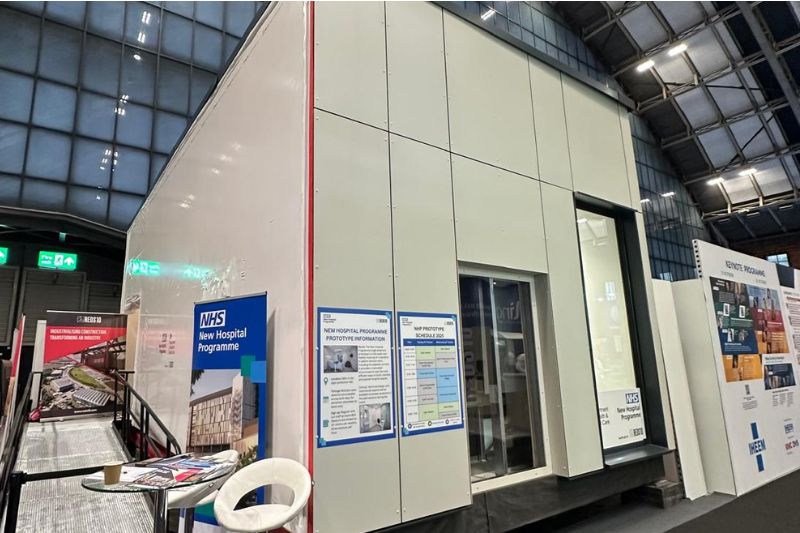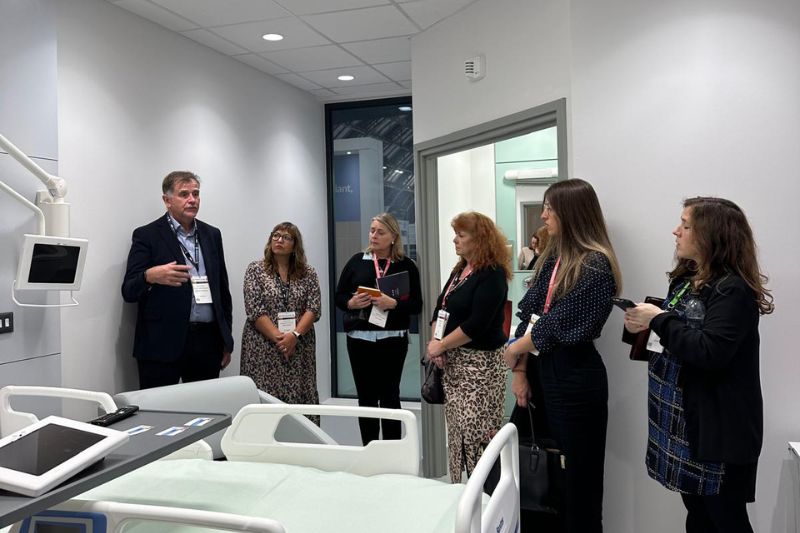This year’s Healthcare Estates 2025 in Manchester was one of the busiest in recent memory. The trajectory of the event is on the rise, but whether this is a sign of renewed confidence and urgency running through the UK’s healthcare construction sector remains to be seen.
The two-day event in Manchester saw exhibition halls and seminar areas packed throughout the days, reflecting the industry’s recognition that the next few years will shape the NHS estate for a generation.
Opening the conference, Pete Sellars, Chief Executive of IHEEM, reminded delegates of the gravity of the moment.
“We have been given a responsibility by the public,” he said. “This is the largest capital investment programme in the UK ever.”
That message set the tone for the event. With billions committed through the New Hospital Programme (NHP) and other infrastructure pipelines, Sellars’ remarks underscored both the opportunity and the accountability facing the sector.
The event theme, “Prevention is better than cure”, set the tone. Organisers and speakers allike were pushing estates and construction teams to think beyond single projects and toward long-term resilience, standardisation and value-for-money across the NHS estate.
Prototype rooms signal a repeatable future
A highlight of the exhibition floor was the NHP’s full-scale model patient bedroom, part of the “Hospital 2.0” concept.
The hard-to-attain tour ticket saw lots of attendees. During a trust estate teams tour, the viewers assessed layouts, MEP coordination, and finishes, while offering constructive feedback. This feedback included small and large tweaks around vendor neutrality and futureproofing supply through design.
Visitors reportedly admired what they saw, and discussions around the prototype reflected a shared determination to make upcoming hospital builds more standardised, flexible, and replicable. For contractors, this was a tangible preview of what the NHP’s design principles will look like on site.


Legacy contracts under the microscope
Another candid discussion came from Steve Lawley of IHEEM, who addressed the evolution of long-term procurement models.
Many of the widely used PFI models, or Private Finance Initiatives, from the 90s, are now coming to a close.
Many of those early healthcare PFIs, which were used to fund and deliver hospitals and other public infrastructure, are now approaching the end of their concession periods. The first major hospital handbacks are already underway. This is prompting renewed scrutiny of asset condition, lifecycle maintenance, and how best to transition estates back into NHS ownership
“I don’t think I’ve seen a PFI contract that looked the same 10 years later,” Lawley noted in his talk on the subject.
His observation drew knowing nods from attendees. It was a reminder that design and contract teams must allow for adaptation — whether through modular MEP systems, digital infrastructure upgrades, or evolving sustainability standards.
What this means for contractors and engineers
The mood across the halls was one of serious optimism — opportunity tempered with realism. Among the key takeaways for healthcare construction professionals:
- Design for lifecycle, not just completion. Future maintenance, replacement, and upgrade access are now central to the client brief.
- Vendor-neutral interfaces matter. The NHP prototype reinforced that flexibility in equipment and component choices will help trusts manage costs and avoid lock-in.
- Offsite and modular are moving mainstream. Repeatable layouts demand precision-manufactured pods and plant skids.
- Contracts must accommodate change. As Lawley’s PFI insight showed, technology and compliance standards evolve — contracts must too.
- Capacity is under pressure. Despite the optimism, several attendees noted the challenges of workforce shortages and stretched supply chains — issues that could threaten delivery timelines if not addressed early.
The busiest in years, and for good reason
Many delegates remarked that this year’s Healthcare Estates felt busier than ever, both in footfall and in the density of technical discussion. The packed schedule of seminars, networking events, and product demonstrations reflected a sector gearing up for unprecedented activity.
The Healthcare Estates Awards also saw Michael Portillo as the guest speaker and rewarded 12 fantastic winners and projects, with over 650 guests in attendance to celebrate.
If there was a single message from Healthcare Estates 2025, it was this: the era of one-off hospital projects is over. The UK is entering a programme-driven phase, where consistency, collaboration, and accountability will determine success.
As Pete Sellars reminded the audience, the public is watching and expecting results. For construction and engineering teams, this is both a challenge and an opportunity to deliver buildings that truly serve patients and staff for decades to come.
